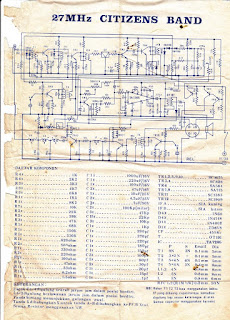Menyadur tulisan dari sebuah website yang menampilkan rekaman kegiatan di radio
Menggunakan frekuensi selama ada ijin dan sesuai dengan aturan yang ada ya sah-sah saja untuk memancar, tapi "Membiasakanlah yang benar jangan membenarkan yang biasa". Tapi gunakan lah frekuensi sebagai sumber alam yang terbatas sesuai dengan peruntukan nya...
Dikutip dari : http://radio-tims.blogspot.com.au/
Link yang ditulis pada blog nya adalah : http://radio-tims.blogspot.com.au/2012/05/indonesian-horse-racing-on-7000khz-and.html
Link yang lain nya adalah di monitor on IARU Region -1 : http://www.iarums-r1.org/iarums/sound/7000-ins.wav
Berita terbaru adalah surat langsung dari Chairman of Directors IARU region 3 di ditujukan langsung kepada Mentri Kominfo bapak Tifatul Sembiring perihal penyalahgunaan frekuensi.
Berikut ini copy suratnya:
SATURDAY, MAY 5, 2012
Indonesian Horse Racing on 7000kHz and 11425kHz
http://www.youtube.com/watch?v=jTWsNvR80xk
This is one of those odd things that makes shortwave radio so intriguing. I first heard these strange chanting on 7000kHz LSB a few years back and have been running into them quite frequently. In December I found the same phenomenon outside of the Amateur bands on 11425kHz USB and recorded it, which I have presented a short excerpt for you.
Many people have theorised as to what these strange chanting are about - from number stations to some sort of call to prayer. I believe they’re from Indonesia and are using identifiers to chant over one another to see who is able to be heard above the rest. K9RZZ on the radioreference.com forums said amateurs used to call this “Horse Racing” and I’d have to agree with him. It sounds like they take turns being the MC, to judges who is the winner and to introduce the players to compete. The MC says start and the participants chant their Ids for twenty seconds or so. The winners from each round get to play off against each other until an ultimate winner is found, who gets to take home the prize hamper. This seems to go on for hours, the earliest I’ve hear them on air is about 1100z and the latest was 1700z (3am local) when I tuned out for bed (it may have kept going).
This is one of those odd things that makes shortwave radio so intriguing. I first heard these strange chanting on 7000kHz LSB a few years back and have been running into them quite frequently. In December I found the same phenomenon outside of the Amateur bands on 11425kHz USB and recorded it, which I have presented a short excerpt for you.
Many people have theorised as to what these strange chanting are about - from number stations to some sort of call to prayer. I believe they’re from Indonesia and are using identifiers to chant over one another to see who is able to be heard above the rest. K9RZZ on the radioreference.com forums said amateurs used to call this “Horse Racing” and I’d have to agree with him. It sounds like they take turns being the MC, to judges who is the winner and to introduce the players to compete. The MC says start and the participants chant their Ids for twenty seconds or so. The winners from each round get to play off against each other until an ultimate winner is found, who gets to take home the prize hamper. This seems to go on for hours, the earliest I’ve hear them on air is about 1100z and the latest was 1700z (3am local) when I tuned out for bed (it may have kept going).
http://www.youtube.com/watch?v=hUncXt6C4OE
In this video you can hear the MC introducing the players and very enthusiastically starts their 20 second race by saying in English “GO! Go! GO! Go! GO!”
I’m located in Melbourne Australia and recorded it using a Soft66ADD SDR joined to a 10m vertical antenna.
If you have any other clues or ideas please post them in the comments.

















































